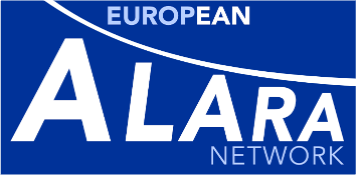OBJECTIVE — The EAN would like to examine how the optimisation principle has been applied in the case of NORM and radon (at workplace or in other circumstances) and whether the choices of exposure type and exposure categories affect the practical implementation of ALARA.
A webinar will be organised to present an overview of experiences and discussed if the elements of the optimisation process could be influenced by the type of exposure situation/categories of exposure:
- Selection of the appropriate dose criteria (dose constraint, reference level);
- Dose assessment;
- Identification of the protective options and selection of the best option;
- Implementation, monitoring of exposure and iteration.
PROGRAMME. — The programme of the webinar is available: here.
RESULTS. — In total 168 participants have registered to the webinar and almost 110 attended the live 8 December 2022. AGES, Austria have provided an in-kind and very welcome support for the registration and holding the webinar.
The replay of the webinar is available: https://www.youtube.com/watch?v=g9fdblFRUOY (duration: 2 h 20').
The slideshows are also available:
- The philosophy of the ICRP system applied to NORM and Radon, Mr. J F Lecomte, IRSN, France (pdf);
- Practical experience from Norway in NORM remediation, Mrs. M V Holmstrand, DSA, Norway (pdf);
- Feedback on radiation protection for NORM facilities and underground workplaces, Mrs. K N Rovenská, SURO, Czech Republic & RadoNorm partner (pdf);
- Radon potential map of the UK - updating and implementation, Mrs. T Gooding, UKHSA, United Kingdom (pdf);
- Optimization in protection from radon: problems and proposals, Mr. F. Bochicchio, ISS, Italy (pdf).
- A synthesis of the presentation and discussions will be produced and published here. ◼︎
REFERENCES.
Clement, 2021. Keeping the ICRP recommendations fit for purpose, C. Clement et al. 2021 Journal of Radioogical Protection 41 1390.
Cool, 2013. Review of the ICRP system of protection: the approach to existing exposure situations, D. A. Cool, March 2015, Annals of the ICRP 44(1 Suppl).
EAN, 2021. European ALARA Network Strategic Agenda 2021-2026.
Euratom, 2013. Council Directive 2013/59/Euratom of 5 December 2013 laying down basic safety standards for protection against the dangers arising from exposure to ionising radiation, Official Journal of the European Union, L 013, 17 January 2014.
ICRP, 2007. The 2007 Recommendations of the International Commission on Radiological Protection. ICRP Publication 103. Ann. ICRP 37(2–4).
ICRP, 2014. Radiological Protection against Radon Exposure. ICRP Publication 126. Ann. ICRP 43(3).
ICRP, 2019. Radiological protection from naturally occurring radioactive material (NORM) in industrial processes. ICRP Publication 142. Ann. ICRP 48(4).
ICRPedia, http://icrpaedia.org/Exposure_Categories_and_Situations, June 2019.
Lecomte, 2016.J. F. Lecomte, Understanding existing exposure situations. Annals of the ICRP 2016 45:1_suppl, 54-63.
